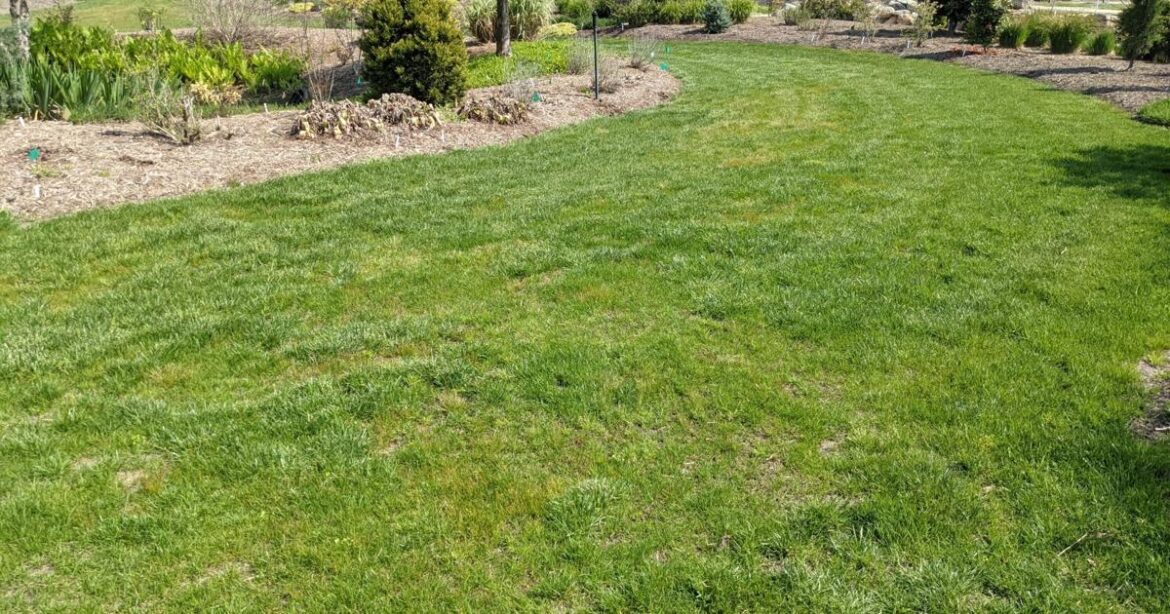Having a turfgrass lawn is an active choice a gardener has to make when they are deciding how to manage their property. You don’t necessarily “just” have bermudagrass or centipede. These turf types may grow for a couple years, but even they still need ongoing maintenance and management to look their best. We usually get the calls at the Extension Office this time of year as people’s turf emerges from dormancy and doesn’t look as good as it did before. This last bout of rain coupled with the warming temperatures means your warm-season turf should be up and going. Let’s do a little check in to make sure your season is off to a good start!
SOIL TEST
The soil is where your plants live and so it is imperative to their overall health that the soil where they are living is optimal for their growth. You have to test your soil to know what is going on in your soil. We cannot emphasize this enough. Thankfully from April 1 to mid-November it is a free service through the NCDA Soil Lab, and even outside of that window it is only $4 a sample. There are some sampling tests available at local stores, but they are not reliable or accurate, and don’t give you specific, research-based recommendations for your turf like the state soil tests. If you have your soil test results and you are not sure how to read them, please contact your local Extension office.
SELECT TURF TYPE APPROPRIATE FOR YOUR SOIL AND CLIMATE
There are some parts of Lee County that are better for cool-season or warm-season turf types, but it is important to be reasonable about your choices. If you are west of U.S. 1, you could probably have success with cool-season grasses, like tall fescue or Kentucky bluegrass, as long as you select heat-tolerant varieties (see the list from NC State!). Otherwise, you will have more success with warm-season grasses, especially if you have sandy soils and full-sun exposure. There are multiple options for installation strategies, but make sure you do your homework before you invest your time, energy and money into purchasing materials.
Warm-season turf types tend to have a spreading habit and can be aggressive. We love this about them because they can cover and fill spaces quickly! It is good to know that before you sow these turf types next to garden beds and vegetable gardens. Warm-season turfs should be renovated during the warm months, which is best between May 1 and July 1.
PREPARE YOUR SITE BEFORE INSTALLING/RESEEDING/OVERSEEDING
The old adage “an ounce of prevention is worth a pound of cure” applies at all levels of gardening, in that, instead of prevention, you are choosing proper preparation! Site prep, whether you are looking at installing new turf or renovating an old lawn, is critical. Your soil test will tell you how much lime and fertilizer you need to add, and will even tell you about the bulk density (or compaction!) of your soil. Do not add lime unless your soil test says you need it. Aeration and addition of organic matter can also help prepare your soil for planting. Check out the “Carolina Lawns” guide to learn more about what to do for your project!
YOU WANT SUCCESS
We want you to be successful too, and success starts with proper site preparation, soil testing and turf selection, no matter what stage your turfgrass journey is at. Even old, tired turf can be renovated if you understand what you need to do and get a plan together before taking action. If you need help with your turf, please contact your local NC Cooperative Extension office!
RESOURCES
Amanda Bratcher is Horticulture Agent for the NC Cooperative Extension- Lee County Center.

